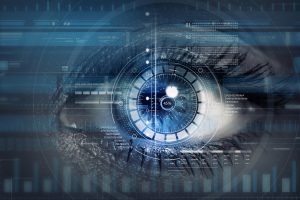
In today’s interconnected digital landscape, cybersecurity has become paramount. As cyber threats evolve in complexity and scale, so too must our defense mechanisms. Artificial Intelligence (AI) has emerged as a transformative force in fortifying cybersecurity strategies across industries. By leveraging AI’s capabilities, organizations can detect, prevent, and mitigate cyber threats more effectively than ever before.
Understanding AI in Cybersecurity

AI in cybersecurity involves the use of machine learning algorithms to analyze vast amounts of data, identify patterns, and detect anomalies that may indicate potential security breaches. Unlike traditional methods that rely on predefined rules, AI can adapt and learn from new data, making it highly effective in combating sophisticated cyber threats.
AI-Powered Threat Detection
One of the primary applications of AI in cybersecurity is threat detection. AI algorithms can sift through enormous datasets in real-time, flagging suspicious activities or behaviors that human analysts might overlook. This proactive approach allows organizations to detect and respond to threats swiftly, minimizing potential damage.
Predictive Analytics for Risk Assessment
AI’s predictive capabilities enable cybersecurity teams to forecast potential risks based on historical data and ongoing trends. By analyzing patterns of past attacks and vulnerabilities, AI models can assess the likelihood of future threats. This proactive risk assessment empowers organizations to preemptively strengthen their defenses.
Automating Incident Response
AI-driven automation streamlines incident response processes by instantly identifying and prioritizing threats. This automation can trigger immediate responses such as isolating compromised systems or blocking malicious activities, reducing response times from hours to seconds.
Enhancing Endpoint Security
Endpoints such as laptops, smartphones, and IoT devices are common targets for cyber attacks. AI-powered endpoint security solutions continuously monitor device behavior, detect anomalies, and enforce security policies in real-time. This proactive defense ensures that all endpoints remain secure against evolving threats.
Behavioral Biometrics and Authentication
Traditional authentication methods like passwords are increasingly vulnerable to breaches. AI enhances security through behavioral biometrics, analyzing unique user patterns such as typing speed or mouse movements to verify identities. This approach strengthens authentication protocols, making it harder for malicious actors to gain unauthorized access.
Securing Cloud Infrastructures

As organizations migrate to cloud environments, securing sensitive data and applications becomes critical. AI-driven cloud security platforms monitor network traffic, detect unusual access patterns, and enforce encryption protocols. This proactive monitoring ensures comprehensive protection across cloud infrastructures.
AI in Threat Intelligence
AI’s ability to process and analyze vast amounts of threat intelligence data enhances threat detection and response capabilities. By aggregating data from diverse sources and applying machine learning algorithms, AI can identify emerging threats, predict attack vectors, and recommend preemptive actions to mitigate risks.
Mitigating Insider Threats
Insider threats pose significant risks as malicious insiders or unintentional actions can compromise cybersecurity defenses. AI-powered monitoring tools analyze user behaviors, detect deviations from normal patterns, and raise alerts for suspicious activities. This proactive monitoring helps organizations prevent insider threats before they escalate.
The Future of AI in Cybersecurity Defenses
Looking ahead, AI’s role in cybersecurity is poised to expand further with advancements in machine learning, natural language processing, and predictive analytics. As cyber threats become more sophisticated, AI will continue to evolve as a cornerstone of defense strategies, adapting to new challenges and safeguarding digital assets.
Conclusion
In conclusion, AI represents a paradigm shift in cybersecurity defenses, offering proactive threat detection, automated incident response, and enhanced risk assessment capabilities. By harnessing AI’s power, organizations can strengthen their cybersecurity postures, protect sensitive data, and mitigate risks in an increasingly digital world.










